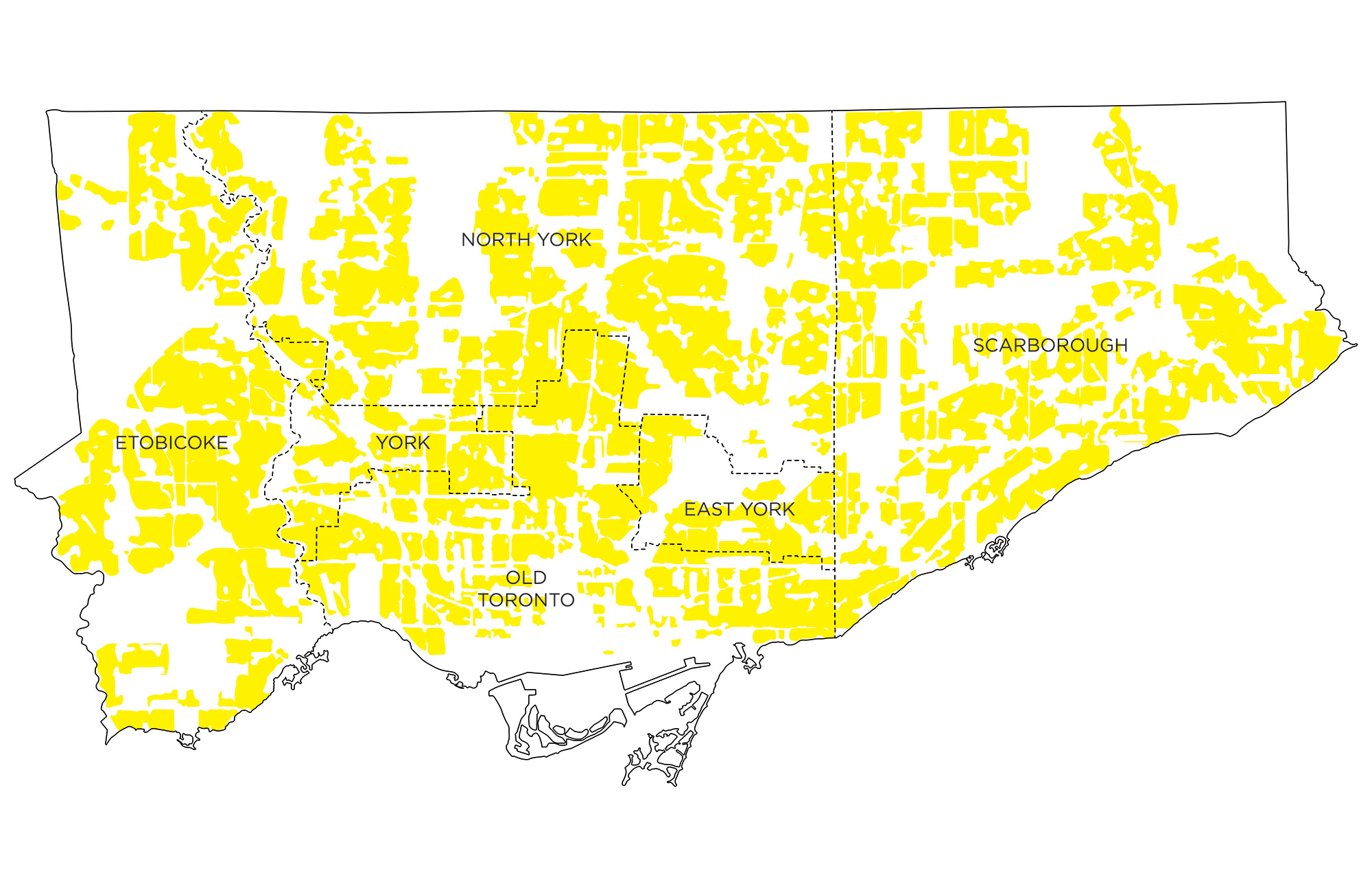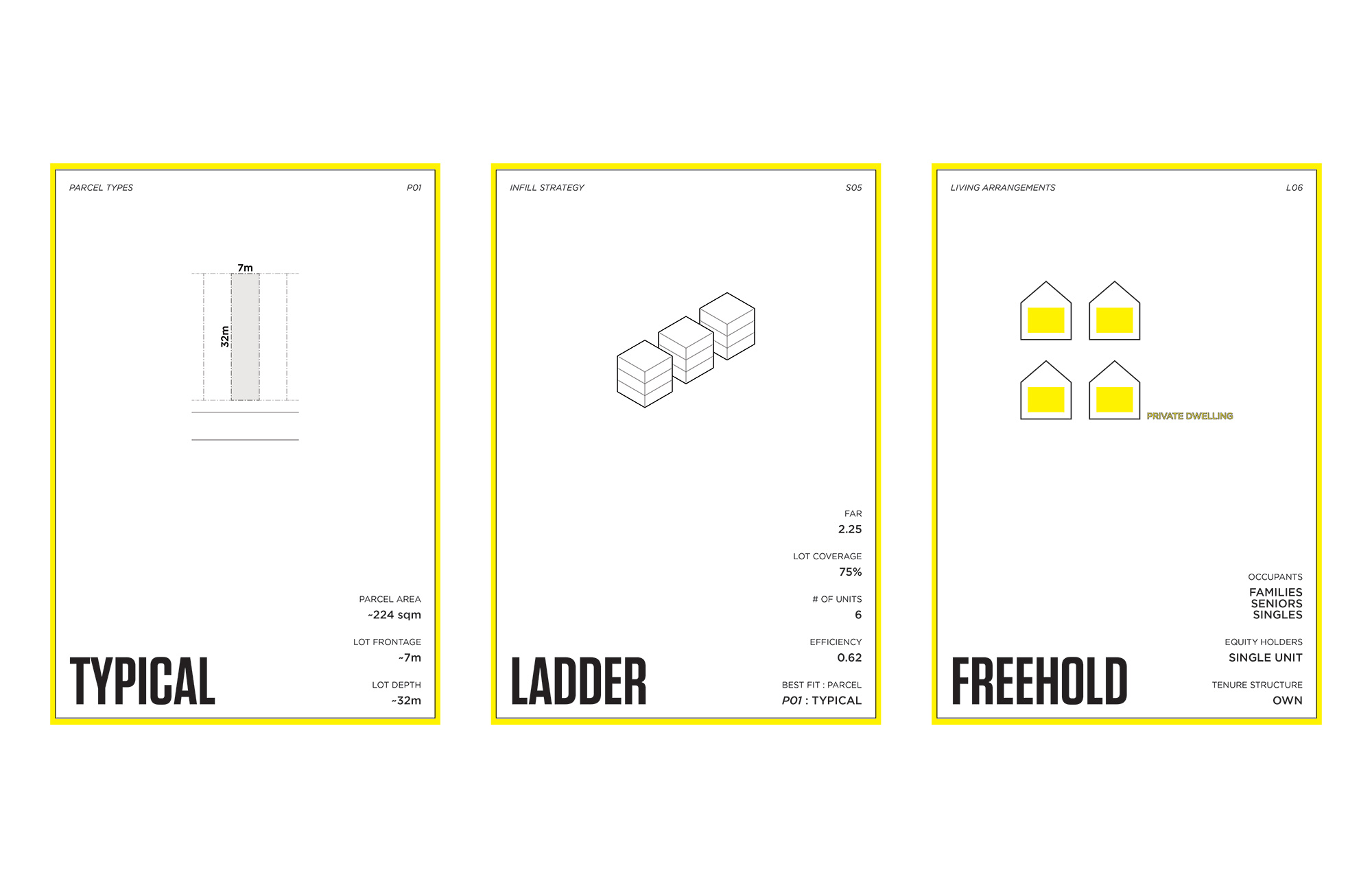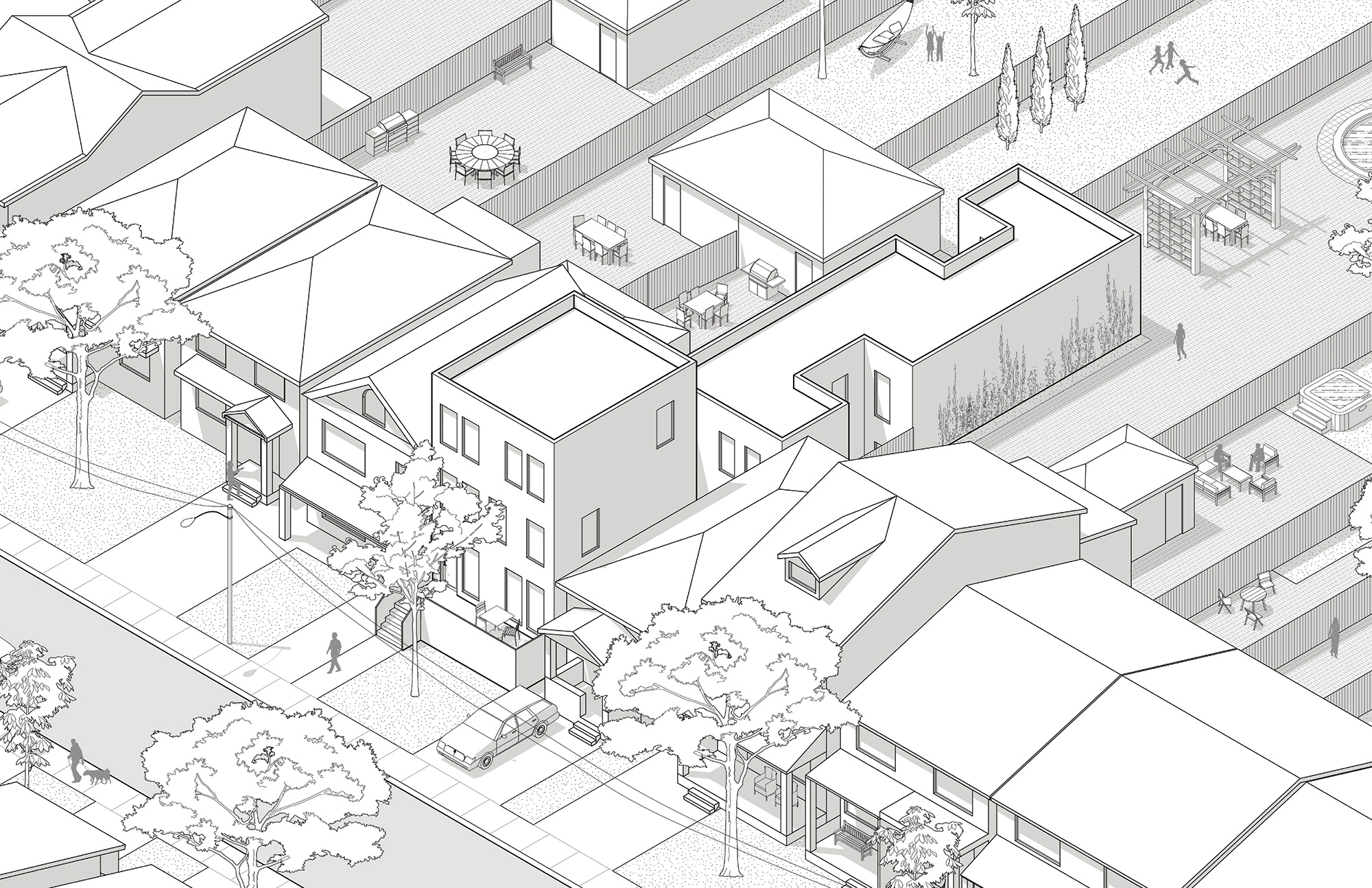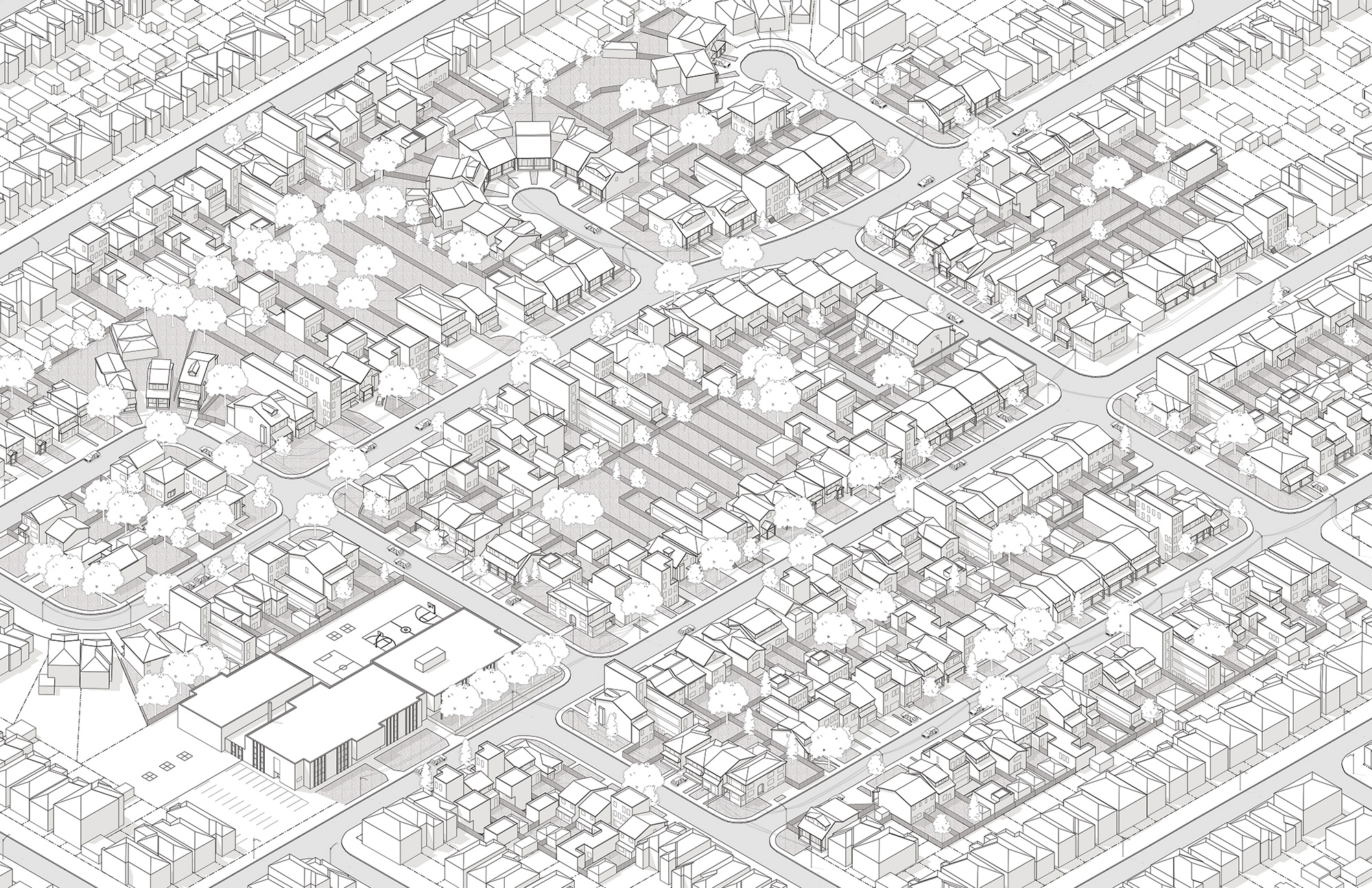Briana-Nicole Zitella, "Loosening the Yellowbelt"
The focus of Briana's thesis was what's known as the "Yellowbelt" — a term used by planners and urbanists to describe a large swath of the city of Toronto where zoning rules make it difficult to build anything other than detached housing.
A recent analysis by Toronto's urban planning division found that the Yellowbelt covers just over 47 per cent of the city's landmass. As a result, almost half of Toronto is effectively off-limits to anyone who wants to build denser forms of housing, like townhouses or apartment buildings.
"In the city, we're really only able to build two types of housing: single-family detached and high-rise," Briana says. "I wanted to tackle this large area in Toronto and see if it was possible to create a way of adding new infill strategies."

The Yellowbelt.
Briana decided to devote her research to finding new ways of imagining methods of adding density to Yellowbelt neighbourhoods. She was primarily interested in the so-called "missing middle" — meaning, housing types that are more dense than single detached homes, but less dense than tall condo towers.
She began by analyzing a large chunk of midtown Toronto, between St. Clair and Eglinton avenues, west of Bathurst Street. Gradually, she narrowed her focus until she found herself studying individual lots within a single city block. It occurred to her that restrictive zoning was only one of several obstacles to adding density in Yellowbelt neighbourhoods. Another, more pernicious obstacle was a lack of imagination: in a neighbourhood that consists of almost nothing but detached housing, it can be hard to conceive of building anything other than yet another detached house, or something that at least has the outward appearance of a detached house.
"When you look at one parcel, on one block, in one neighbourhood, it's kind of daunting to imagine anything on that site other than a single detached house," Briana says. "I wanted to create a system that would make it more possible to imagine something new."

Three of Briana's cards. The first shows a lot type, the second shows an infill strategy, and the third shows a living arrangement.
The system she created was a deck of 30 cards, similar in size and shape to playing cards. Six of the cards represented different parcel shapes ("wide," "deep," "l-shaped," and so on). Another 18 cards each represented a different strategy for adding density — in other words, a type of structure, other than a detached house, that could conceivably be built on a single urban housing lot. The final six cards each represented a different type of living arrangement ("multi-generational," "rooming house," "live-work").
Briana's idea was that by arranging the three types of cards in different combinations, a designer or urban planner could easily generate ideas for new and different housing types. The difficult task of imagining new uses for lots in Yellowbelt neighbourhoods would be made easier.
To illustrate her point, she used her cards to create a few examples of new, medium-density housing types.
For instance, here, in the centre of this image, is the result of combining a "typical" lot card, a "flat" housing card, and a "rooming house" living-arrangement card:

Briana's card for the "flat" housing type specifies that it occupies 95 per cent of a lot's surface area, and has a floor area ratio of 1.6. A "flat" house is tall in front and low and long in the back. In order to make this type of structure into a rooming house, Briana punctured the building envelope with courtyards, which bring light and air into the many small dwelling units inside, and also add places for residents to gather and socialize.

Briana's study area, with 17 per cent of homes replaced by new infill.
As a final step, Briana Nicole performed an analysis of the likely effect of applying the types of infill strategies specified in her card deck to her 11.1-hectare study area. She calculated that if just 17 per cent of the area's homes were to be remade into medium-density structures like the ones on the cards, the neighbourhood's total population would increase from 772 to 1,114.
Advisor: Michael Piper

